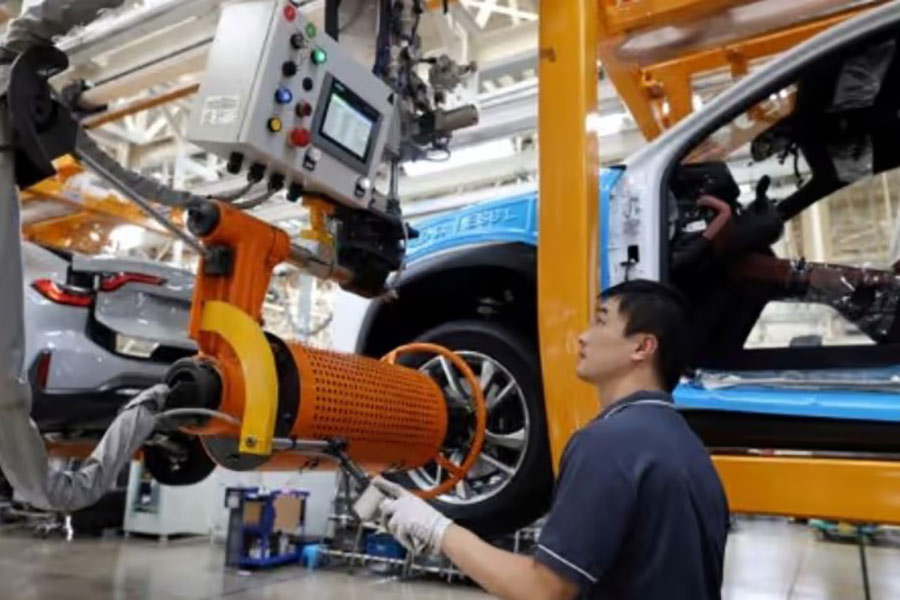By Leika Kihara
TOKYO- Asian factory activity expanded in May as manufacturers benefited from broadening global demand, private surveys showed on Monday, adding to hopes for sustained economic recovery in the region where China is showing early signs of rebound.
Manufacturing activity expanded in Japan for the first time in a year and in South Korea at the fastest pace in two years, due in part to hints of a pick-up in the automobile and semiconductor sectors, the surveys showed.
China’s private Caixin survey also showed factory activity rising at the fastest pace in about two years in May on strong production and new orders, offering hope of a broad-based recovery in Asia and other parts of the world.
The robust readings point to recovery in the manufacturing sector underpinning Asian growth and cushioning the blow from any market volatility caused by uncertainty over the US monetary policy outlook.
Japan’s final au Jibun Bank manufacturing purchasing managers’ index (PMI) rose to 50.4 in May from 49.6 in April, having last climbed above the 50.0 threshold – which separates growth from contraction in activity – in May 2023.
The key output and new orders subindexes remained in contraction but both improved close to the no change level and fell at their slowest pace in a year, suggesting that conditions are starting to look up.
Manufacturers also stayed upbeat about the outlook reflecting expectations that marketing efforts and new product launches would be successful. They also hoped for a recovery in the automobile and semiconductor sectors.
The results showed “encouraging trends across the manufacturing industry, with new orders and output broadly stable and businesses remaining optimistic about the year ahead,” said Pollyanna De Lima at S&P Global Market Intelligence.
Factory employment expanded albeit at a slower pace, which De Lima attributed to retirements as well as difficulties in finding suitable replacements.
“Another challenge faced by goods producers was an intensification of cost pressures, as yen depreciation added strain on imported item prices.”
Input price pressures were at their worst in over a year, with firms saying costs of labor, material and transportation had risen from April largely due to the yen’s weakness.
The inflation strains prompted manufacturers to raise their selling prices at the fastest pace in a year last month. Output prices have expanded since December 2020.
The yen’s weakness and its impact on imported prices as well as domestic consumption have become a policy headache for the Bank of Japan as it looks to hike interest rates again after ending negative rates in a landmark decision in March.
South Korea’s PMI also rose to 51.6 in May, the highest reading since May 2022 and coming after two months below the 50 mark, showed a survey from S&P Global.
“South Korea’s manufacturing sector appears to have caught a second wind,” said Joe Hayes, principal economist at S&P Global Market Intelligence.
“Qualitative evidence from the survey also paints a promising forward-looking picture, with panelists commenting on imminent new product launches providing them with a platform for sustainable production expansion.”
Adding to the bright signs, China’s Caixin/S&P Global manufacturing PMI rose to 51.7 in May from 51.4 the previous month, the fastest pace since June 2022 and beating analysts’ forecasts of 51.5.
The reading contrasts with an official survey on Friday that surprised market participants by showing a fall in manufacturing activity, pointing to a mixed picture of the sprawling industry.
Manufacturing activity in May also expanded in Taiwan, Indonesia, Vietnam and the Philippines, private surveys showed.





